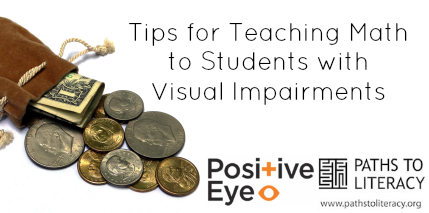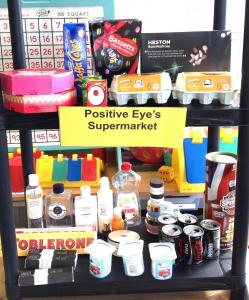6 Tips for Teaching Maths to Students with Visual Impairments
Submitted by Gwyn McCormack on Feb 12, 2015

1. Plan Ahead
- Forward planning is essential to ensure work will be accessible to the child.
- It is also essential to ensure work is differentiated to meet the child’s individual stage of mathematical development.
- Provide a work station space large enough for the extra resources to be used easily.
2. Create Graphs and Diagrams
- Keep diagrams and graphs simple and clearly laid out.
- Reinforce and explain the graph and diagram as the child systematically learns to explore it.
- Cubes on a tactile board can assist a child with early graph formation
-
 with use of appropriate language to support under- standing of vertical, horizontal, rows, columns etc.
with use of appropriate language to support under- standing of vertical, horizontal, rows, columns etc. - Cross sections can be understood by cutting fruit in half.
- Peg boards, and Lego on a base board and a centre line made with wikki stix can be used to introduce symmetry, creating a design for the child to copy.
3. Make Accomodations
- Achieving accuracy when drawing a line, measuring or producing graphs and diagrams can be difficult and this needs to be taken into consideration when marking the work.
- The child may require more time to complete the task to allow time for concept understanding and also due to the complexity of accessing information presented in tactile or large print format.
- Either give more time to the task or reduce the requirements of the task.
 4. Teaching Strategies
4. Teaching Strategies
- Split the task into smaller sections
- Teach the concept step by step
- Teach strategies to explore and to discover what to another child is visually obvious.
- Use of abacus, number line in Braille or large print, hand on hand demonstration and verbal prompts are useful to support counting activities.
- Peg boards and an abacus can be used to support data or represent tallying
5. Provide Daily Hands-On Experience
- Hands on and regular daily practice and concrete experience on each mathematical area to help compensate for the lack of incidental mathematical input
- E.g. use money, play shop, hands on exploration of geometrical shapes and other shapes.
- Provide basic information that other children have incidentally, e.g. number of fingers on hands.
6. Use Appropriate Language to Explain Concepts
- Avoid ambiguity when verbally reinforcing a concept
- Use concrete experience alongside verbal explanation whenever possible.
- Keep mathematical language consistent
- Introduce words that have different meanings in a mathematical context in a practical hands on situation to ensure understanding.

